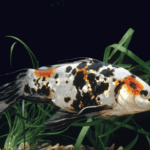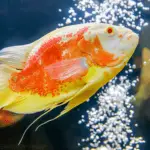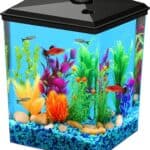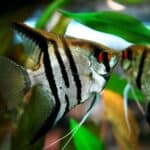Turtles and fish are both popular choices for pet owners looking to add a little life to their home. However, many people wonder if these two different types of creatures can coexist in the same tank. The answer is yes, but it takes a little bit of planning and preparation to make sure both your fish and turtle are happy and healthy.
Tankmates: Choosing the Right Companions for Your Fish and Turtle
When it comes to keeping fish and turtles in the same tank, choosing compatible tankmates is crucial for the health and well-being of both species. Not all species of fish and turtles are compatible, and it’s important to research and choose the right tankmates to ensure a harmonious environment.
When choosing fish to keep with your turtle, it’s important to consider the size and temperament of the fish. Turtles are known to be opportunistic feeders and will eat small fish if given the chance. For this reason, it’s best to avoid keeping small or slow-moving fish with turtles. Instead, opt for larger, more active species that are less likely to become a meal for your turtle. Some suitable options include larger tetra species, such as the Congo tetra or the Emperor tetra, and cichlid species, such as the Firemouth cichlid or the Jack Dempsey cichlid.
Zebrafish (Danio rerio) can potentially live with turtles in the same tank, but it’s important to consider a few key factors before doing so. Firstly, it’s important to consider the size of the turtle and the size of the tank. Zebrafish are small fish and can easily be eaten by larger turtle species if the tank is not big enough.
Additionally, larger turtle species may require a larger tank with more swimming space, which can make it difficult to provide enough space for the zebrafish to swim and thrive. Secondly, it’s important to consider the water parameters. Zebrafish prefer water with a pH range of 6.0-7.5 and a temperature range of 72-78°F (22-26°C), while turtles have different water parameter requirements. It can be difficult to maintain the appropriate water parameters for both species in the same tank.
Lastly, it’s important to consider the feeding habits of the turtle. Turtles are opportunistic feeders and may eat small fish such as zebrafish if given the opportunity. It’s important to ensure that the turtle is provided with a diet that does not include small fish to prevent this from happening.
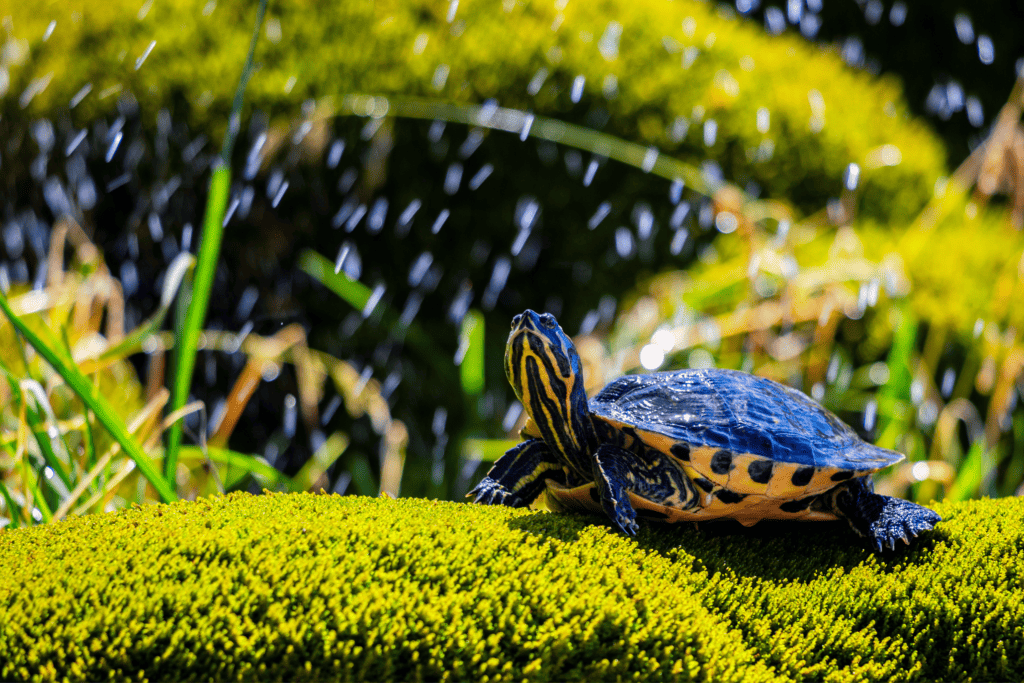
When choosing a turtle to keep with your fish, it’s important to consider the size and feeding habits of the turtle. Some turtle species, such as the red-eared slider, are known to be voracious eaters and will eat small fish if given the chance. For this reason, it’s best to avoid keeping small or slow-moving fish with these types of turtles. Instead, opt for larger, more active species that are less likely to become a meal for your turtle. Some suitable options include larger softshell turtles or box turtles.
When it comes to compatibility, it is not only important to consider the size and feeding habits of the species, but also the water parameters they require. Some fish and turtles species require different pH levels, water temperatures, and hardness levels. It is essential to research the specific needs of the species you plan to keep to ensure that the water in the tank meets their requirements.
Another important factor to consider is the social behavior of the species you plan to keep. Some fish and turtles are known to be aggressive, while others are more passive. It’s important to choose tankmates that have compatible social behaviors to avoid any conflicts or stress.
In summary, when choosing tankmates for your fish and turtle, it’s important to consider the size and feeding habits of the species, their water parameters, and their social behavior. By selecting compatible tankmates, you can create a harmonious environment for both your fish and turtle to thrive.
RELATED: What noise do turtles make?
Types of Fish and Other Water Creatures to Avoid Mixing with Turtles
When keeping fish and turtles in the same tank, it’s important to choose compatible tankmates to ensure a harmonious environment. However, not all species of fish and other water creatures are suitable to be kept with turtles.
It’s important to avoid keeping small or slow-moving fish with turtles, as they are known to be opportunistic feeders and may eat small fish if given the chance. Some examples of fish to avoid keeping with turtles include guppies, neon tetras, and small cichlids.
Another type of water creature to avoid keeping with turtles are invertebrates such as snails, shrimp and crayfish. Turtles have a tendency to eat invertebrates, and they may not survive in the tank.
It’s also important to avoid keeping species that have different water parameter requirements. Some fish and other water creatures require specific pH levels, water temperatures, and hardness levels, and it can be difficult to maintain these conditions for multiple species.
Additionally, it’s important to avoid keeping aggressive species with turtles. Turtles are known to be slow-moving and are not able to defend themselves as easily as more active fish species. Keeping aggressive species with turtles can lead to stress and injury for the turtle.
In summary, when keeping fish and turtles together, it’s important to avoid keeping small or slow-moving fish, invertebrates, species with different water parameter requirements, and aggressive species with turtles. By avoiding these types of fish and other water creatures, you can ensure a safe and harmonious environment for both your fish and turtle.
It is also important to note that some species of turtles are more aggressive than others and may not be suitable tankmates for certain fish species. For example, larger species of turtles such as red eared sliders may not be suitable tankmates for smaller fish species. In such cases, it is best to keep the turtle in a separate tank.
When in doubt, it is always best to consult with a veterinarian or a professional aquarist for advice on suitable tankmates for your specific species of turtle. Researching the natural habitat, diet and behavior of the turtle species you plan to keep is also an essential step in identifying suitable tankmates for your turtle.
In summary, keeping fish and turtles together can be a challenging task, but by being mindful of the types of fish and other water creatures to avoid mixing with turtles, you can create a safe and harmonious environment for both your fish and turtle.
Tank Size and Set-Up
The first thing to consider when setting up a tank for both fish and turtles is the size of the tank. Turtles, especially larger species, require a lot of swimming space. A tank that is at least 75 gallons is recommended for adult turtles. Fish, on the other hand, do not require as much room, but still need a tank that is large enough to accommodate their size and swimming habits. A good rule of thumb is to have at least 10 gallons of water per inch of fish.
When setting up the tank, be sure to include both land and water areas. Turtles need a place to rest and bask out of the water, while fish need a place to swim. A good way to achieve this is by incorporating a basking area, such as a rock or platform, and a filter for the water.
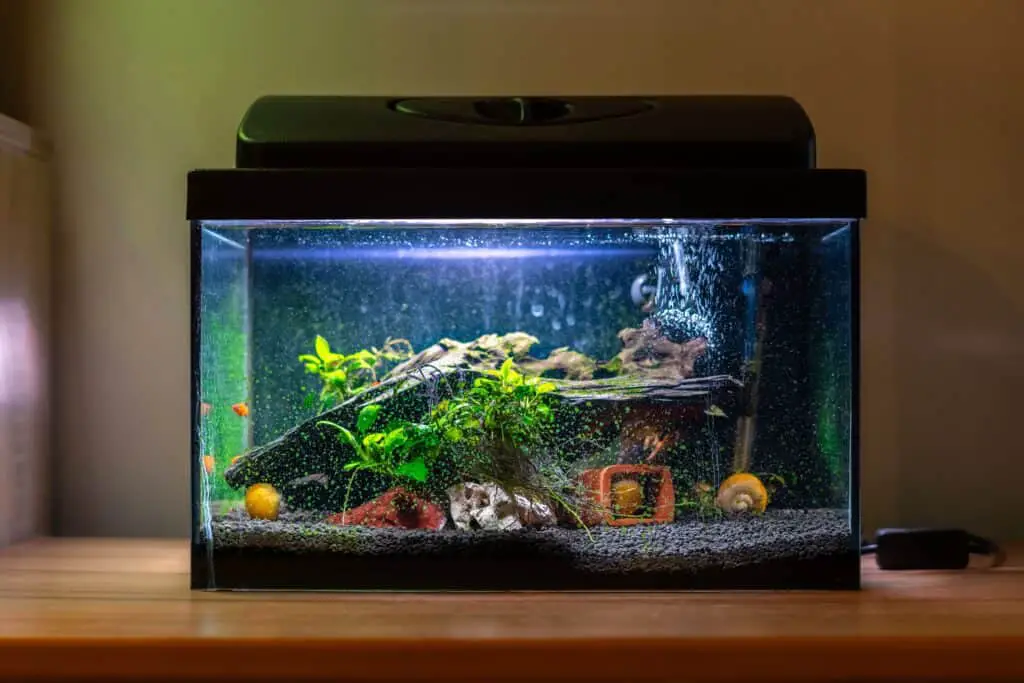
Water Quality and Maintenance
Maintaining the water quality in a tank that houses both fish and turtles is crucial for the health of both species. Turtles produce a lot of waste, which can quickly foul the water if not properly filtered. A good quality filter, along with regular water changes, will help keep the water clean and clear.
In addition to a filter, a UVB light should be used to provide the turtle with the necessary UVB rays for proper shell and overall health. Fish require a different set of water parameters, so it is important to research the specific needs of the fish you plan to keep and make sure the water in the tank meets those requirements.
Feeding and Diet
Turtles and fish have different dietary needs, so it’s important to make sure they are both getting the proper nutrition. Turtles are carnivorous and will generally eat a diet of worms, insects, and small fish. Fish, on the other hand, have a variety of dietary needs, depending on the species. Some fish are herbivores and require a diet of mostly plant matter, while others are carnivores and require a diet of mostly protein.
Health and Disease: Keeping Your Fish and Turtle in Top Condition
Keeping both fish and turtles healthy and disease-free requires regular monitoring of water quality, proper feeding, and providing a suitable environment. However, despite our best efforts, fish and turtles can still develop health issues.
Some common health concerns for fish include fin rot, ich, and bacterial infections. Fin rot is a condition where the fins of the fish start to deteriorate and can be caused by poor water quality or injury. Ich, also known as white spot disease, is a parasite infection that causes white spots to appear on the fish’s skin. Bacterial infections can also occur, usually caused by dirty water or poor water conditions.
Turtles, on the other hand, can suffer from shell rot, respiratory infections, and metabolic bone disease. Shell rot is a condition where the turtle’s shell becomes soft and discolored, often caused by poor water quality or injury. Respiratory infections can occur in turtles due to poor water quality, and can cause labored breathing and nasal discharge. Metabolic bone disease is a condition caused by a lack of calcium and UVB exposure, which can lead to soft shells and difficulty moving.
To prevent these common health concerns, it is important to maintain good water quality by performing regular water changes and monitoring the water parameters. Proper feeding and providing the right environment, including UVB lighting, can also prevent many health issues.
If your fish or turtle does develop a health concern, it’s important to consult a veterinarian experienced in treating fish and turtles. They can diagnose the condition and provide proper treatment and medication.
Handling and Interaction: Safely Caring for Your Fish and Turtle
Handling and interacting with your fish and turtle can be a fun and rewarding experience, but it’s important to do so safely to avoid injury or stress to the animals.
When handling fish, it’s important to use wet hands or a net to avoid removing their protective slime coating. Never grab a fish by the tail or squeeze them, as this can cause injury. When releasing a fish back into the tank, do so gently to avoid injury.
When handling turtles, it’s important to support their entire body, including the shell. Never pick up a turtle by the tail or legs, as this can cause injury. Turtles can also become stressed if handled too frequently, so it’s best to limit handling to only when necessary.
When interacting with your fish and turtle, it’s also important to consider their natural behaviors and to provide them with a suitable environment. Fish and turtles require different types of habitats and environments, so it’s important to research the specific needs of the species you plan to keep and provide them with the appropriate setup.

Breeding: Ensuring the Success of Your Fish and Turtle
Breeding fish and turtles can be a rewarding experience, but it’s important to understand the specific requirements and best practices for breeding your chosen species.
When breeding fish, it’s important to provide them with a suitable environment, including the right water parameters, feeding, and tank size. It’s also important to provide hiding places and appropriate spawning sites, such as caves or plants, for the fish to breed.
When breeding turtles, it’s important to provide them with a suitable environment, including the right water parameters, temperature, and UVB lighting. It’s also important to provide hiding places and appropriate nesting sites for the turtles to breed.
It’s also important to consider the sex of the fish and turtle you plan to breed, as some species are more challenging to sex than others. It’s also important to understand the mating behaviors of the species and to provide the appropriate conditions for breeding to occur.
In conclusion, breeding fish and turtles can be a rewarding experience, but it’s important to understand the specific requirements and best practices for breeding your chosen species. By providing the appropriate environment, including the right water parameters, feeding, and tank size, and by understanding the mating behaviors of the species, you can increase the chances of success when breeding fish and turtles.
Conclusion
Turtles and fish can live together in the same tank, but it takes a little bit of planning and preparation to make sure both species are happy and healthy. It is important to consider the size of the tank, the set-up, water quality and maintenance, and the dietary needs of both species. With proper care and attention, your turtle and fish can live together in harmony.


